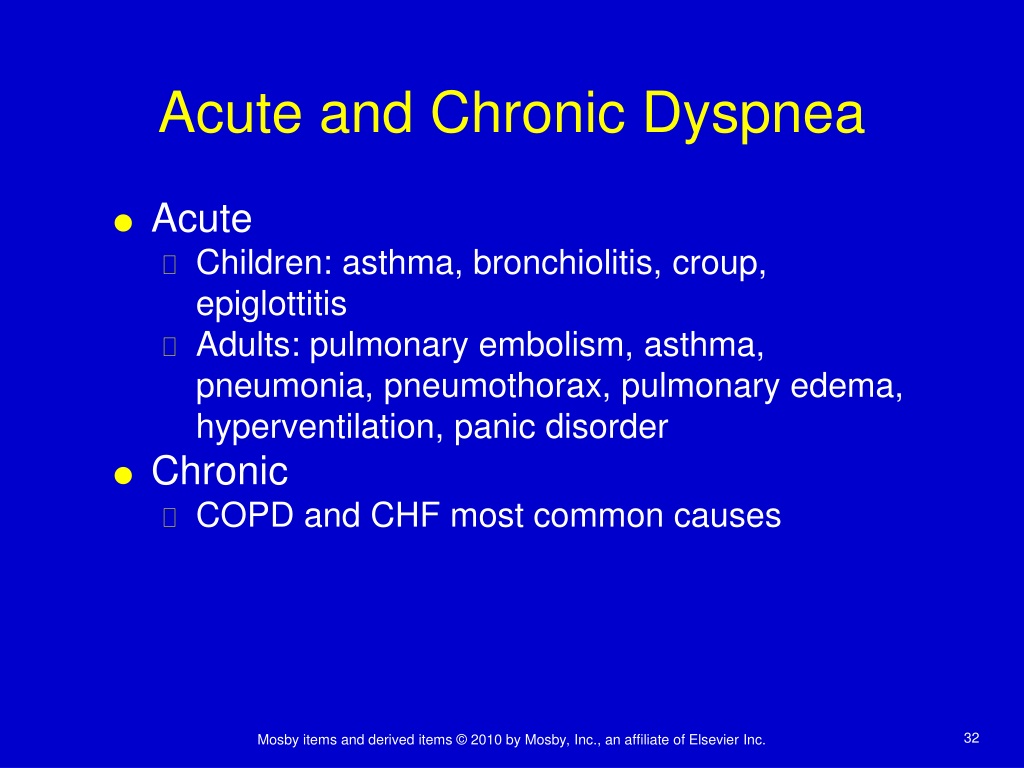
Long-lasting slowly progressive shortness of breath (chronic shortness of breath) eg: Guillain-Barré syndrome, Myasthenia gravis Shortness of breath without pathological on the lungsĪnemia, PE, pulmonary hypertension, intoxication, psychogenic dyspnea, ascites, metabolic acidosis, diabetic coma, uremia, musculoskeletal etiol. General condition without alteration, paresthesia of limbs Pneumothorax, aspiration of a foreign body Left-sided heart failure, bronchial asthma, exacerbation of COPD ĭifferential diagnosis of acute dyspnea ĪCS, PE, aortic dissection, pneumothorax, pleurisy acute mountain sickness ) and, last but not least, acute coronary syndrome (acute myocardial infarction, unstable angina pectoris ), exacerbation of asthma. These can be a symptom of severe pulmonary embolism, massive pulmonary edema (e.g. In the same way, acute shortness of breath includes problems that develop over a period of days. after aspiration (of a foreign body, stomach contents) or after trauma (formation of a pneumothorax ). This form of shortness of breath can arise suddenly, e.g. Rapidly progressive shortness of breath (acute shortness of breath) Shortness of breath developed over hours, daysĮxacerbation of COPD, asthma bronchiale, fibrosis (IPF) Depending on the nature and development of the problem, we can distinguish several different types of shortness of breath. in pneumonia) and expiratory (difficult, usually slow exhalation, e.g. We also distinguish between inspiratory (difficult inhalation, e.g. Dyspnea at rest usually indicates a greater degree of impairment. To assess shortness of breath, it is very important to distinguish whether it is exertional or rest. metabolic longer-lasting respiratory compensation ( Kussmaul breathing in decompensation of diabetic ketoacidosis ).neuromuscular – neurodegenerative muscle diseases, myasthenia, trauma,.psychogenic – hysteria, hyperventilation tetany ,.heart - heart failure with congestion in the pulmonary circulation and the development of pulmonary edema - left-sided heart failure, or mitral stenosis (processes associated with an increase in pressure in the left atrium),.


pulmonary circulation disease with the development of pulmonary arterial hypertension (primary pulmonary hypertension or a consequence of pulmonary embolism ),.pulmonary – COPD, asthma, inflammatory lung diseases ( pneumonia ), interstitial lung processes (pneumonitis, pulmonary fibrosis due to pneumoconioses or other diseases).We divide the causes of shortness of breath based on the primary organ involvement into:


 0 kommentar(er)
0 kommentar(er)
